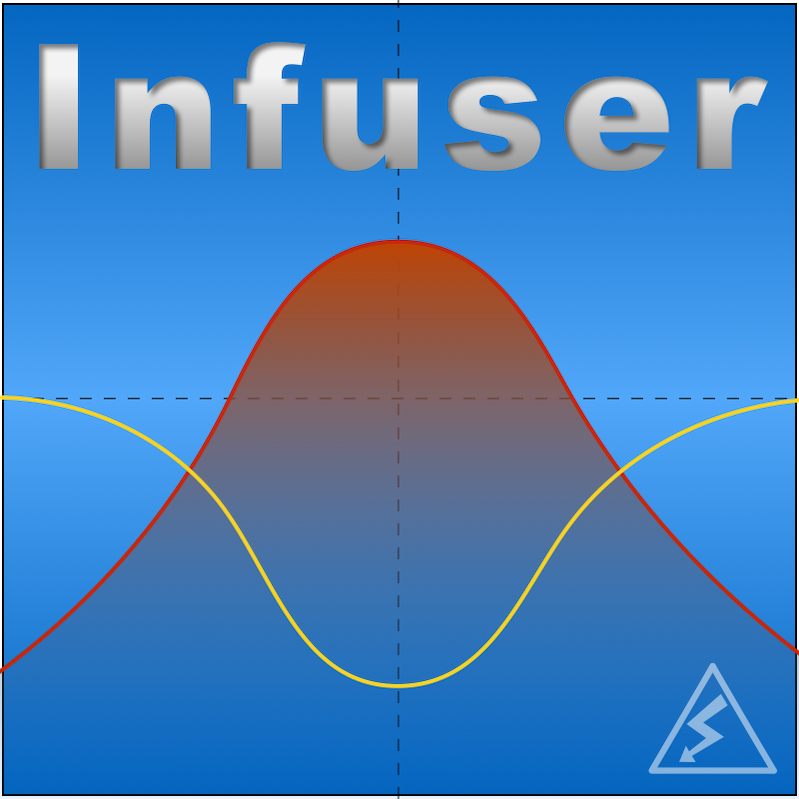Infuser

Infuser is an enhancement effect, designed to be used to add subtle flavor to any track like salt and pepper adds flavor to food. Building on technology introduced in ColoringEQ, Infuser takes a unique approach to frequency-specific saturation effects.

The key with Infuser is in not just adding saturation at specific frequencies and mixing them back with the original in parallel, but also in reducing the level of the original signal at the same frequencies by a proportional amount at the same time. When you add more saturation, Infuser automatically reduces the original signal at the same frequency. This is done to allow you to choose to preserve the overall frequency spectrum of a sound even when adding saturation at various frequencies. The end result is a more controlled and subtle saturation effect, while also allowing you to exaggerate the spectral balances while adding saturation in parallel if you prefer.
Of course you can always fine tune the effect to be more or less subtle, or solo a band to enjoy the 100% saturated signal. Each of the two bands covers the entire spectrum. Plus both bands can be switched to Bell (parametric) shape to focus even more on a smaller audio band. Tuning is done in semitone steps like ColoringEQ, and by using high Q settings you can impart a strong pitch element (saturation helps too). CV inputs for standard Gate/CV are provided for “playing” the EQ bands from.
Applications include:
- Add heft and girth to wimpy tracks that lack low end power, which can also help them remain present on small speakers.
- Add subtle high frequency saturation to dull acoustic instrument from drums to acoustic guitars, and add excitement to vocals.
- Add a pitched effect to low drums, especially for turning ordinary kicks into tuned 808 kicks.
- Use CV for pitch tracking effects.
- Synthesize massive subs from kicks, or create missing upper harmonics on mp3 files or poorly recorded drums.
- Create percussive/shaker effects from rhythmic acoustic instruments such as guitar or piano.
Bonus: Each band includes a frequency specific “nano-synthesizer” which is related to the main section.
Boom controls the Sub synth, a sine wave generator triggered by the output of the Boom filter featuring a Tune offset (linked to the main Tune or independent), Decay time, Drive (for adding harmonics to the sub), and it’s own On/Off, Solo, and Level control. On the back panel you can invert the polarity of the Sub oscillator if it’s conflicting with any existing bass.
Sizzle controls the Fizz synth, a noise generator with its own filter which follows the Sizzle filter shape and Q, but Tune can be linked or independent of Sizzle. Controls include a Threshold (gate) that cuts out the low level sounds, Decay time, Tune and Level as well as On/Off and Solo.
Both of these nano-synths are blended in with the original according to their Level controls, and also have independent output jacks on the back panel for further processing.
Speaking of the back panel, the Tune for all four sections can be controlled via CV as well as Decay for the two nano-synths. There are standard CV/Gate inputs for note control, switchable for Boom and Sizzle separately. Plus, there is a Gate Out from the Sub section that is available.

CREDITS
Infuser
By Selig Audio in association with Pitchblende Ltd.


See Our Plugins at the Reason Shop
 Visit Selig Audio in the Reason Shop for more info and to purchase.
Visit Selig Audio in the Reason Shop for more info and to purchase.
 Check out our video demos and tutorials.
Check out our video demos and tutorials.